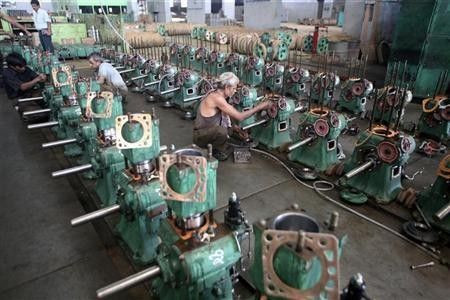U.S. Economic Snapshot: How Are We Doing?

The U.S. economy is not robust by any means, but the recent manufacturing-driven recovery, if tepid, is finally beginning to erase memories of the disappointing slowdown in 2011. On the wings of the recent gains, growth in most sectors of the economy is likely to continue - and maybe even pick up momentum toward the end of the year.
The second half of 2011 was a soft patch from which the U.S. has rebounded fairly impressively, said Larry Hatheway, London-based chief economist for Swiss banking giant UBS. This is an economy that is beginning to operate in virtuous cycles.
One wild card, though: housing. Weak home sales and depressed prices continue to be a drag on the economy and on people's perception of their own wealth.
This is the first in a series of periodic snapshots of the U.S. economy by the International Business Times; in these reports, we examine the key numbers and the trends they reflect:
- GDP. The U.S. economy expanded at an annualized rate of 2.8 percent during the fourth quarter, slightly less than the 3 percent most economists expected but still at the fastest pace in one-and-a-half years. Businesses rebuilt inventories in the quarter, which added 1.94 percent to GDP growth, but excluding that restocking the nation's GDP only grew 0.8 percent, suggesting the economy may advance more slowly in the early part of this year.
- Unemployment. In the week ending Jan. 21, initial unemployment claims rose by 21,000 to 377,000. That number is still well below the 400,000 figure that economists consider the threshold for an improving labor market. Because jobless claims had fallen steadily in the prior weeks, the 4-week moving average fell 2,500 to 377,500. The unemployment rate fell to 8.5 percent in December, the lowest level in three years.
- Factory output. Durable goods orders - contracts for items that are meant to last three years or more, such as aircraft, cars and toasters - climbed 3 percent last month, boosted by a sharp gain in aircraft orders. Economists had forecast a rise of only 2 percent. Strength in manufacturing was also evident by the Institute for Supply Management's December factory index rose, which rose at the fastest rate in six months. At the same time, U.S. factories added 23,000 jobs in December, the most in five months.
- Labor productivity. Average weekly hours for all workers jumped to 34.4 in December, according to data released Jan. 6. That increase follows the general upward trend since June of 2009, when the metric hit a nadir at 33.7. An increase in average weekly hours is usually seen as a positive sign for the labor market, as it generally predicts more hiring.
- The Standard and Poor's 500 Index. The broad measure of the U.S. equity market is up 4.84 percent for the year. A substantial part of these gains are a byproduct of expectations that the Federal Reserve Board will likely engage in a new round of asset purchases in the next few months, flooding the market - consumers and businesses - with new dollars to spend.
- Housing. New single-family home sales fell unexpectedly in December, declining 2.2 percent to a seasonally adjusted annual rate of 307,000 units. That figure was below analyst estimates of 321,000 units. New home prices also fell, with the median U.S. home now going for $210,300, down from an all-time high of $254,400 in Jan. 2007, before the housing bubble popped. Because existing homes are still selling at relatively low prices, the rebound in the prices of new homes is still a long way off.
© Copyright IBTimes 2024. All rights reserved.





















